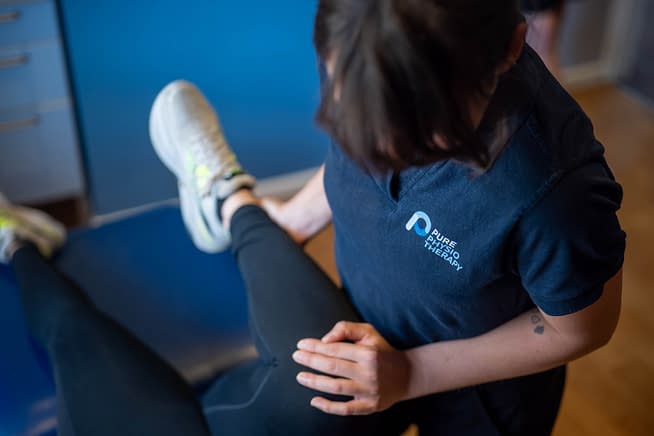What is it?
Manual therapy is a term that relates to treatments given to soft tissue and joints where external manual forces are applied, usually by a therapist’s hands.
Mobilisation, manipulation of joints and massage are all examples of manual therapy. Soft tissue and joint mobilisations often involve pressure applied over a tissue or joint to address local pain or restriction. This pressure is graded from very light pressure to much more firm techniques depending on the problem or target tissues. Joint manipulation, also known as spinal manipulative therapy or spinal “adjustment”, is when therapists apply specific pressure known as controlled thrust. This is a targeted joint movement at high force typically performed by a physiotherapist with additional post-graduation training.
Joint manual therapy such as mobilisations or manipulations are shown to reduce pain and can occasionally be associated with a “popping sound”, which is caused by natural pressure changes in the joint. It is important to recognise that this treatment technique (and its sound) isn’t linked to a joint being out of position. Unfortunately, there are still some misconceptions that joints can be “out of place” which is not supported by research evidence and creates unnecessary fear.
How does it work?
Manual therapy involves utilising specific hands-on techniques including soft tissue and joint manipulation and mobilisation. It is used to treat soft tissues and joint structures to increase range of motion whilst reducing pain.
Our specialist musculoskeletal physiotherapists are trained to deliver manual therapy and it is often used in conjunction with exercise to assist with stiff and painful areas to get you back to full function. Following manual therapy it is important that patients perform regular movements and exercises to maintain and improve the joint mobility to get the full benefit of the treatment over the longer term.
Assessment and Treatment

This will include an assessment of your range of movement as well as putting hands on the affected area to ascertain areas of discomfort to ensure the treatment is most effective. Not everyone will be suitable for the stronger hands-on techniques and it is important that we assess each individual for the appropriateness for manual therapy particularly when it comes to some of the more vigorous grades of joint and soft tissue mobilisation. As a patient receiving any physiotherapy treatment, including manual therapy, it is important that you feel empowered to give feedback to the therapist providing the treatment. We aim to ensure that you always feel comfortable and in full control of the session. Never be afraid to give feedback during treatment as no one knows your body better than you.
Joint Manipulation – Current Research
There is significant research supporting the use of manual therapy including joint manipulation or joint adjustment therapy. This research shows a reduction in pain levels and offering an increase in joint mobility and therefore general flexibility in the surrounding area. It is important to put manual therapy and joint manipulation in a wider context of improving movement and therefore function. Any manual therapy techniques should be followed up with regular movement and exercise to enhance the benefits and enable people to manage their movement and pain more effectively with independent self-care. Someone receiving manual therapy techniques alone, without carrying out exercise and general movement, will not get the full long term benefit they might hope to see. It’s important you work collaboratively with the physiotherapist to ensure any hands-on intervention is supported by taking on the advice and exercise recommended by the therapist during your sessions.
Joint Mobilisation – Current Research
Joint mobilisation has been researched for many decades and there is good evidence showing improvement in terms of pain, restriction and function across a large range of joints from ankles and knees to shoulders elbows and wrists. Most joints are treatable through joint mobilisations however they should not be seen as an isolated treatment and followed up with advice education and specific exercises which will help to keep the joints supple and continue the benefit. A good example of this would be a frozen shoulder where during a session an individual patient may gain significant benefit from local manual therapy including joint mobilisation. However, the benefits are maintained and indeed further improved if the patient then continues to work on the exercise regime as prescribed by the physiotherapist. Working in partnership with your physiotherapist is the best way to get long term change to pain movement and function.